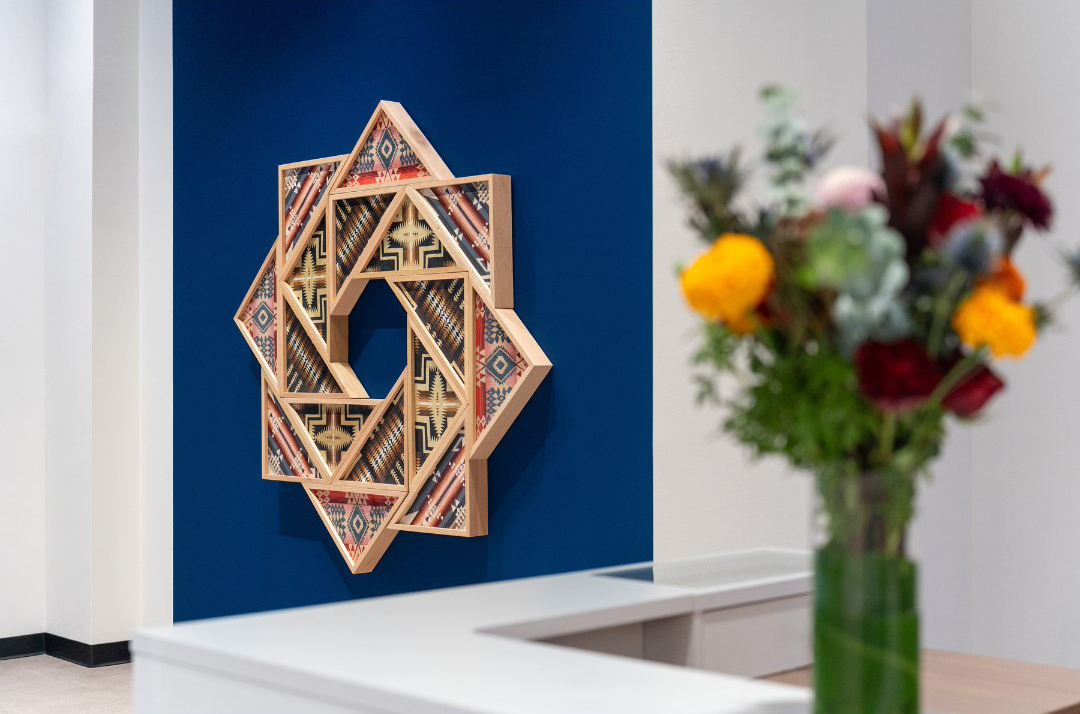Before Dallas-Fort Worth was a sprawling urban metropolis, it was home to many Native American groups, some of whom had settled here after being forced out of their home territories.
The names of those who drove the tribes out are familiar to North Texans — Gen. Edward H. Tarrant and Capt. John B. Denton. For many, this history and the story of the Indigenous people who lived here is not.
This past, as well as how it impacts the present and what comes next, will be explored during a panel on Nov. 15 hosted by The Art Galleries at TCU and featuring four Native speakers.
“It’s important that we talk about the history of Indian Removal because it’s not just something that happened in the past, it’s something that continues today in different forms,” panelist Joe Harjo wrote in an email to the Report. “The impacts are still felt in the lack of healthcare, limited representation, and the ongoing crisis of Missing and Murdered Indigenous Women.”
Harjo, who is from the Muscogee (Creek) Nation, is a multidisciplinary artist and professor at the University of Texas at San Antonio. His exhibition “Indian Removal Act III: We are a Wounding” is on display at the TCU art gallery through Nov. 15.
The title of the three-part work is a reference to the Indian Removal Act of 1830, a law that authorized the forced removal of Native Americans from their lands, leading to the deaths of more than 10,000.
Other panelists include:
Artist Robin Williams, who is Wichita, Caddo and Comanche, works as the history, culture and language preservation administrator for Wichita and Affiliated Tribes. She holds a master’s degree in education from the University of Oklahoma.
LaRay Guerrero, who is an enrolled citizen of the Haliwa-Saponi tribe of North Carolina from the Wolf Clan, co-founded the Native-owned company IndigiTECH, where he is CEO. He is a deputy chief field agent for the Collin County Medical Examiner’s Office and was one of the founders of the performance group Indigenous ACE.
Stephen Silva-Brave, a citizen of the Sicangu Lakota Nation, is a doctoral social work student at the University of Texas at Arlington who researches subjects related to Indigenous peoples. He is a licensed master social worker and chemical dependency counselor intern.
Scott Langston, a retired religion professor from Texas Christian University, is moderating the panel. He said he hopes attendees will leave not only with a better understanding of the history but also with ideas of how everyone can move forward.
“I don’t have any aspirations that this is going to cure everything, but I see a panel like this is to be a step toward a better future,” he said.
For Harjo, he hopes attendees leave with an understanding of how important it is for the stories of Native people to be told, by Native people.
“I want them to understand that we are still here, that we have survived, and that we are healing,” Harjo wrote. “Our communities are strong and resilient. Our stories are living proof of that resilience. We’ve always been here, and we always will be.”
The discussion and art exhibition are free to attend. The panel is 2-4 p.m. at the Fort Worth Contemporary Arts Gallery at 3050 Waits Ave. November is National Native American Heritage month.
McKinnon Rice is the higher education reporter for the Fort Worth Report. Contact her at mckinnon.rice@fortworthreport.org.
The Fort Worth Report partners with Open Campus on higher education coverage.
At the Fort Worth Report, news decisions are made independently of our board members and financial supporters. Read more about our editorial independence policy here.
Related
Fort Worth Report is certified by the Journalism Trust Initiative for adhering to standards for ethical journalism.
Republish This Story
Republishing is free for noncommercial entities. Commercial entities are prohibited without a licensing agreement. Contact us for details.
